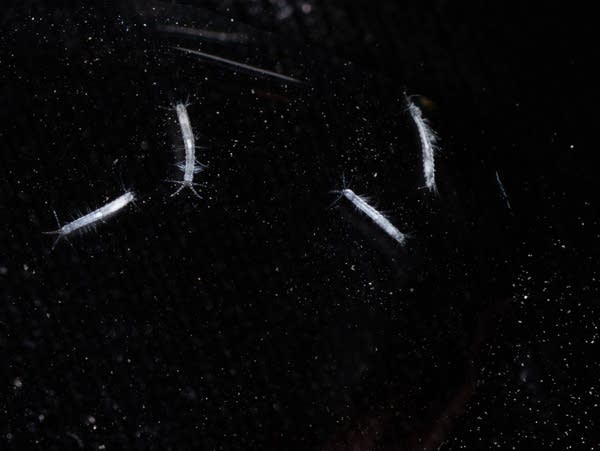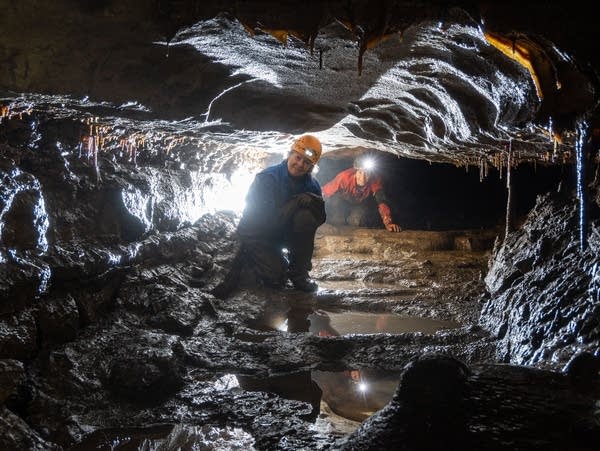Researchers find new life in a very old place: Minnesota’s Mystery Cave

Go Deeper.
Create an account or log in to save stories.
Like this?
Thanks for liking this story! We have added it to a list of your favorite stories.
As habitats go, it doesn’t get much tougher than a cave.
“These caves are starved environments. There isn't a lot of food,” says Dawn Ryan, cave manager at Forestville/Mystery Cave State Park.
But there has been a steady supply of... poop. From bats and raccoons, and other animals that make their way into caves like the one in far southeastern Minnesota’s Fillmore County, an area of ancient rock riddled with fissures and gaps and passageways cut by groundwater.
And when park staff started noticing little millipedes crawling around in Mystery Cave back in 2016, they decided to look a little deeper.
Turn Up Your Support
MPR News helps you turn down the noise and build shared understanding. Turn up your support for this public resource and keep trusted journalism accessible to all.

“You’re laying on the ground, you have a paintbrush, and you’re digging through the guano or you blow on it, you know, and all of a sudden, if you blow gently on it, a little white speck starts to move,” Ryan recounted. “That's when you’re: ‘Oh, there's the animals in it.’”
Digging. Through. Guano.
That might explain why recent research at the park has turned up some potentially unknown invertebrates, lurking in the darkness along the 13 miles of underground passages in Mystery Cave.

The creatures — whether it’s the first time they’ve been found in Mystery Cave, or possibly the first time found anywhere — have lived underground for eons. They’ve gradually adapted to the constant 48-degree temperature, high humidity and utter darkness. Ryan said they are tiny animals, the size of a grain of rice or smaller. They live on the leftovers of whatever washes, flies or walks into the cave.
“They have no eyes,” Ryan said. “This one amphipod is really interesting because we believe it may be new species — it has definitely expanded the range, the known range, of this animal.”
Think miniature, weird shrimp. Some actually live in underground pools, no bigger than a footprint.

And there are spiders. Spiders with really long legs.
“Much longer legs than your average spider,” Ryan said. “They use those long legs to feel their way around in the cave.” Because, until the cave was discovered and opened in 1937, millennia may have passed in the spiders’ home without any light.
It’s a very low-energy environment, so much so that many of the animals have simply evolved away from eyes or pigment that require energy to grow and use.

“Some animals, where their eyes used to be, their eye sockets, they now use that area to store fat from foods. So it's an interesting adaptation.” Ryan said. “That's what gets me excited about these animals. And the fact that they have no pigment. You can see right through their skin right into their body and see their organs.”
Ryan said park researchers have sent samples to researchers at the University of Minnesota, to analyze the animals’ DNA and try to determine if they're a new branch of the families of creatures found in many other caves. It may take years to fully tease out their biological origins.
Mystery Cave is Minnesota’s longest known cave. It became a part of Forestville/Mystery Cave State Park in 1987, a half-century after it was discovered.



